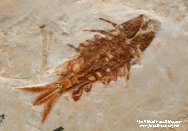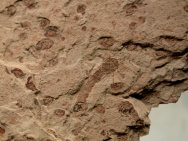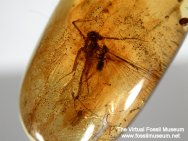 Insect
Order Ephemeroptera comprise the Mayflies. The earliest certain
mayfly nymphs in the fossil record are from the late Carboniferous.
The difficulty of placing fossil nymphs in an insect order, however,
make this in dispute, with some authors claiming appearance as
early as the Devonian is possible. Most fossil mayflies are larval
fossils, ostensibly due to the very short time they have in the
adult stage. After living as aquatic nymphs for one to two years,
they live as adults only for a few days, an ephemeral existence
indeed. When you only have a few days as an adult, finding a member
of the opposite sex to perpetuate the species is of paramount
importance; and any advantage would be a valuable trait. Both
young and adult mayflies are an important part of the food chain,
especially for stream fish.
Insect
Order Ephemeroptera comprise the Mayflies. The earliest certain
mayfly nymphs in the fossil record are from the late Carboniferous.
The difficulty of placing fossil nymphs in an insect order, however,
make this in dispute, with some authors claiming appearance as
early as the Devonian is possible. Most fossil mayflies are larval
fossils, ostensibly due to the very short time they have in the
adult stage. After living as aquatic nymphs for one to two years,
they live as adults only for a few days, an ephemeral existence
indeed. When you only have a few days as an adult, finding a member
of the opposite sex to perpetuate the species is of paramount
importance; and any advantage would be a valuable trait. Both
young and adult mayflies are an important part of the food chain,
especially for stream fish.
The
wings of Mayflies have been hypothesized by some scientists to
be highly adapted (tracheal) gills, leading to conjecture that
their gill blades and insect wings have a common origin, and research
continues into this question. Interestingly, extant mayfly nymphs
do not have gills until after their first moult. This trait could
be shared by the common ancestor of all flying insects.





